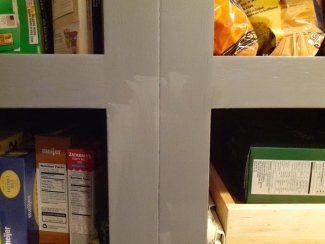

Milk Paint is both a professional and retail product. It is extremely durable and was originally created for commercial use, but is now sold under our retail label because it can be applied by spray and ALSO by brush or roller, handy for DIY consumers. We packa
Both products are exactly the same - the only difference is size. Professional paints are sold in gallons for use in spray applications, whereas Retail Milk Paints are sold in pints and quarts.
General Finishes are particularly durable because they were originally created for commercial use.
Our recommendation to fix white cabinets that have yellowed is to do a thorough sanding and precleaning and recoat with the following products:
Tint General Finishes Milk Paint Clear or White base to match colors in major manufacturer's paint decks using Colorfal Zero VOC water soluble colorants.
General Finishes Milk Paint is a premium low VOC, self-sealing interior/exterior mineral-based paint named for its low-luster sheen. So durable, it is a go-to finish for cabinets and furniture.
Meet "Rockstar", a cleverly designed Blue Buffet finished in Coastal Blue Milk Paint from General Finishes.

Milk Paint is not like a filler-based wall paint. It is engineered for high-use applications such as tabletops and cabinets that require considerably more durability than a wall. The resins that make Milk Paint durable change the properties of it, so you have to handle it differently.
The type of applicator you use will change the thickness of the film and affect the appearance GF Milk Paint.
General Finishes Milk Paint can not be wet distressed after it has dried.
General Finishes is often asked about product cans. Why do they rust? Why aren't they made of plastic? Here is the backstory:
During the supply-line shortages caused by Covid, we are thrilled to have any cans for our paints, stains, and topcoats.